The Galleries presented here display the variation and breadth of my work and include drawings as well as paintings. The subject matter presented ranges from Aviation to Architecture to Nature.
BATTLE Of BRITAIN and WWII
This Gallery contains drawings of the aircraft that faced each other in the RAF’s “finest hour” when the few went up against the many in what is considered the most iconic air battle of World War II, as well as drawings and paintings related to other WWII theatres.

Two Aircraft of 222 Squadron RAF over Tangmere. The Tempest V was flown by the squadron in Germany in the final days of the war. After being posted to Tangmere in the immediate post-war era, 222 Squadron transitioned to the Meteor, one of the first generation of jet fighters.

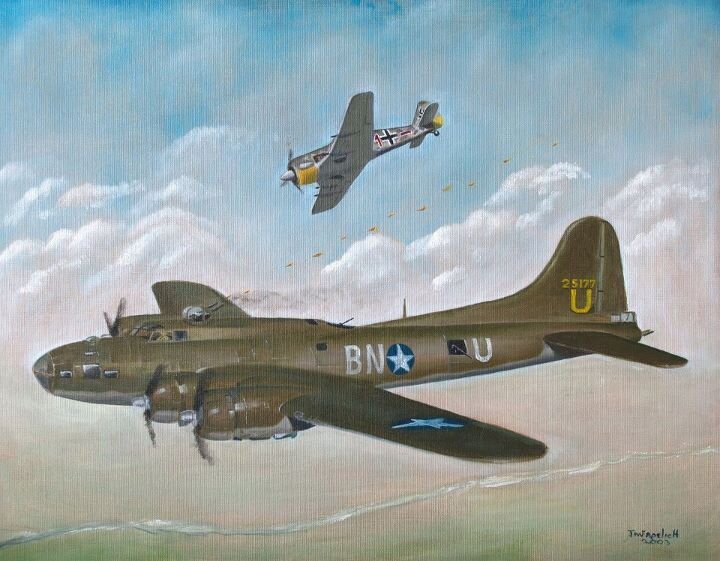
An 8th Air Force B-17 who has dropped out of formation is attacked by a FW 190 of the Luftwaffe.
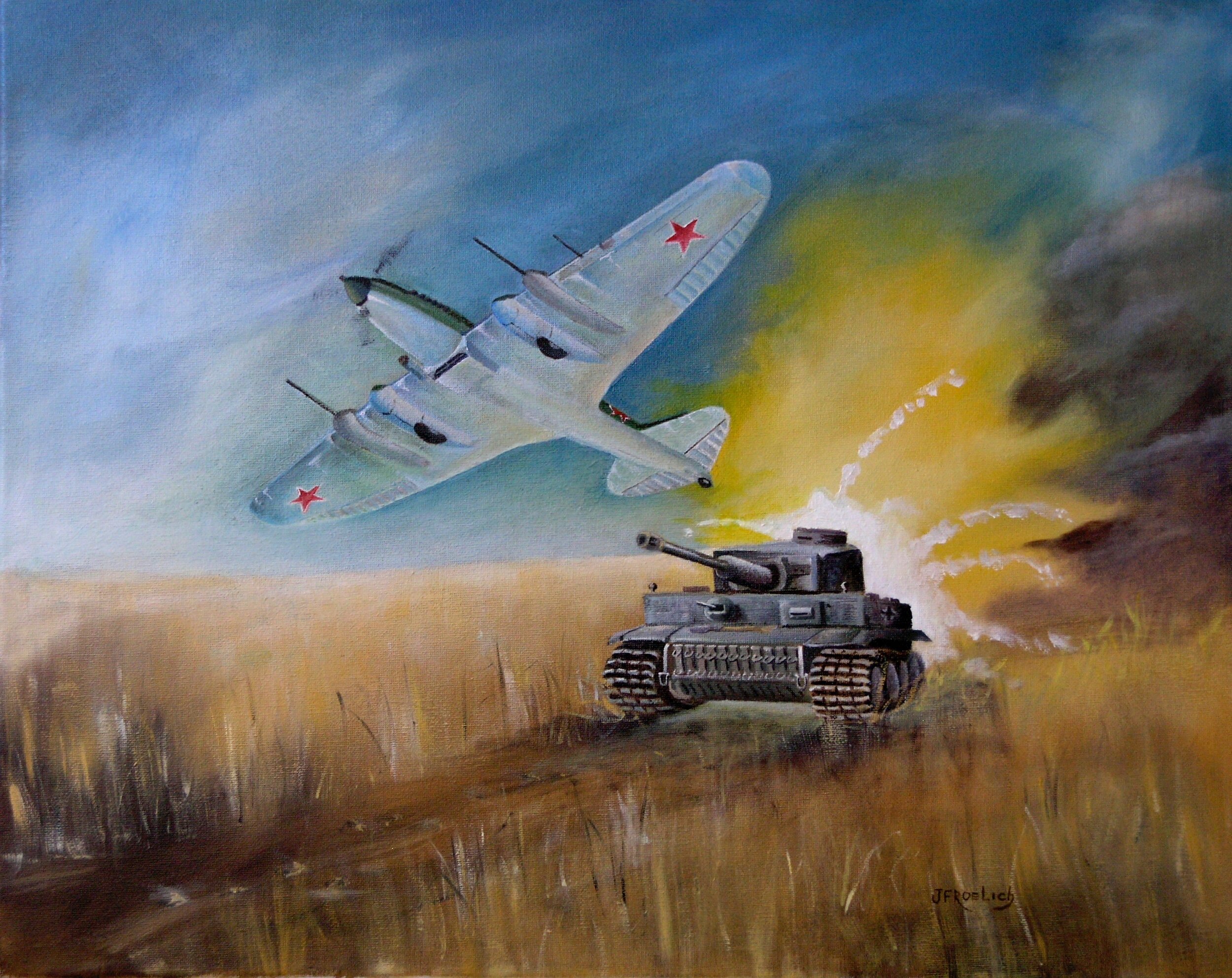
Победа, meaning “Victory” in Russian. A Soviet IL-2 Sturmovik attacks a German Tiger Tank during the decisive battle of Kursk, marking the beginning of the end for the Nazi invasion of Russia. Oil on Canvas



The B-17 Easy goin’ has returned damaged from a raid over Germany and the crew takes a moment to rest after their mission before heading in for de-briefing. Oil on Canvas.

The Stearman was the US equivalent of the British Tiger Moth and used extensively for initial pilot training throughout World War Two. Easy to fly, but tricky to land, it was a challenge for the students who flew it. Pencil and pen on A4 paper.
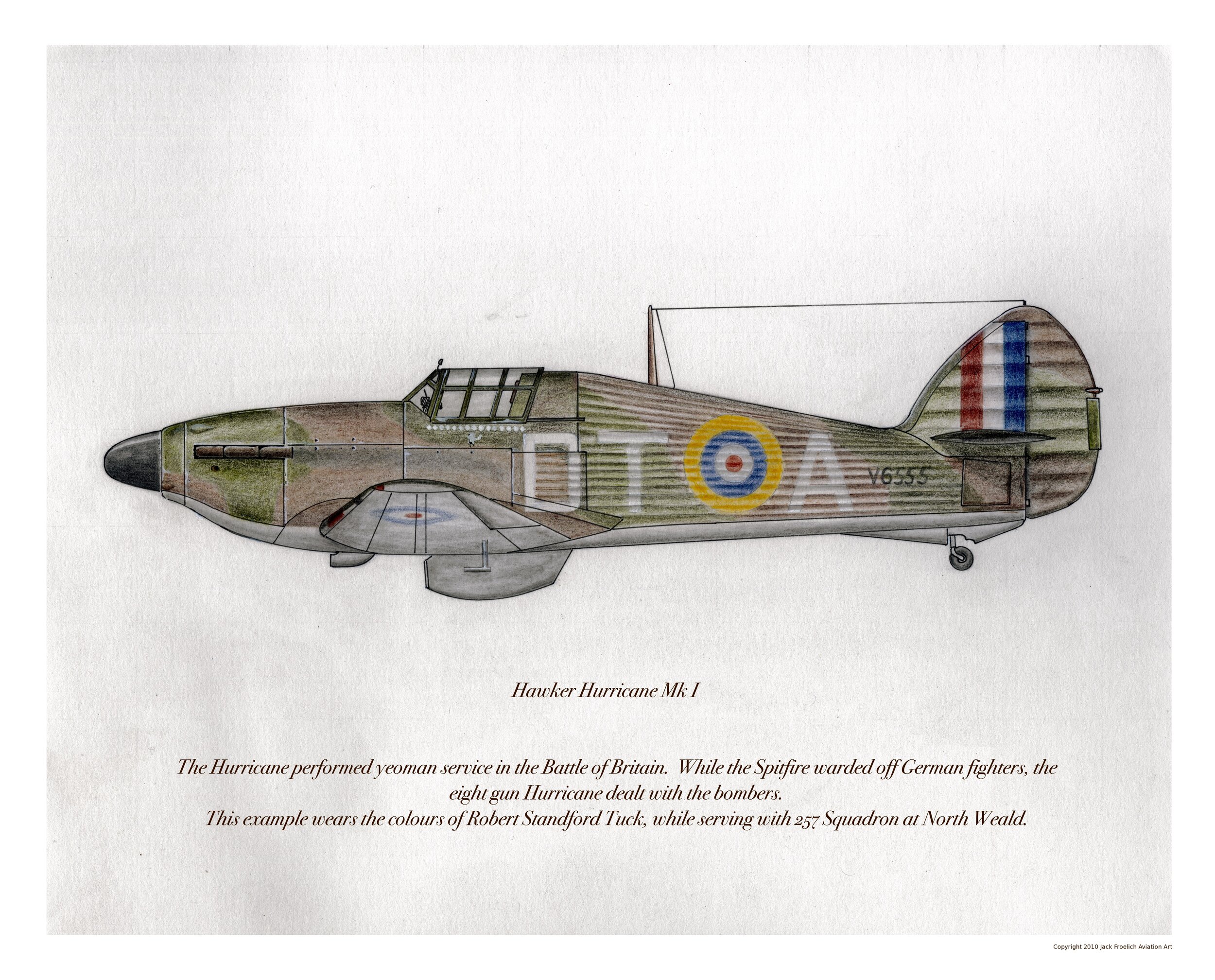

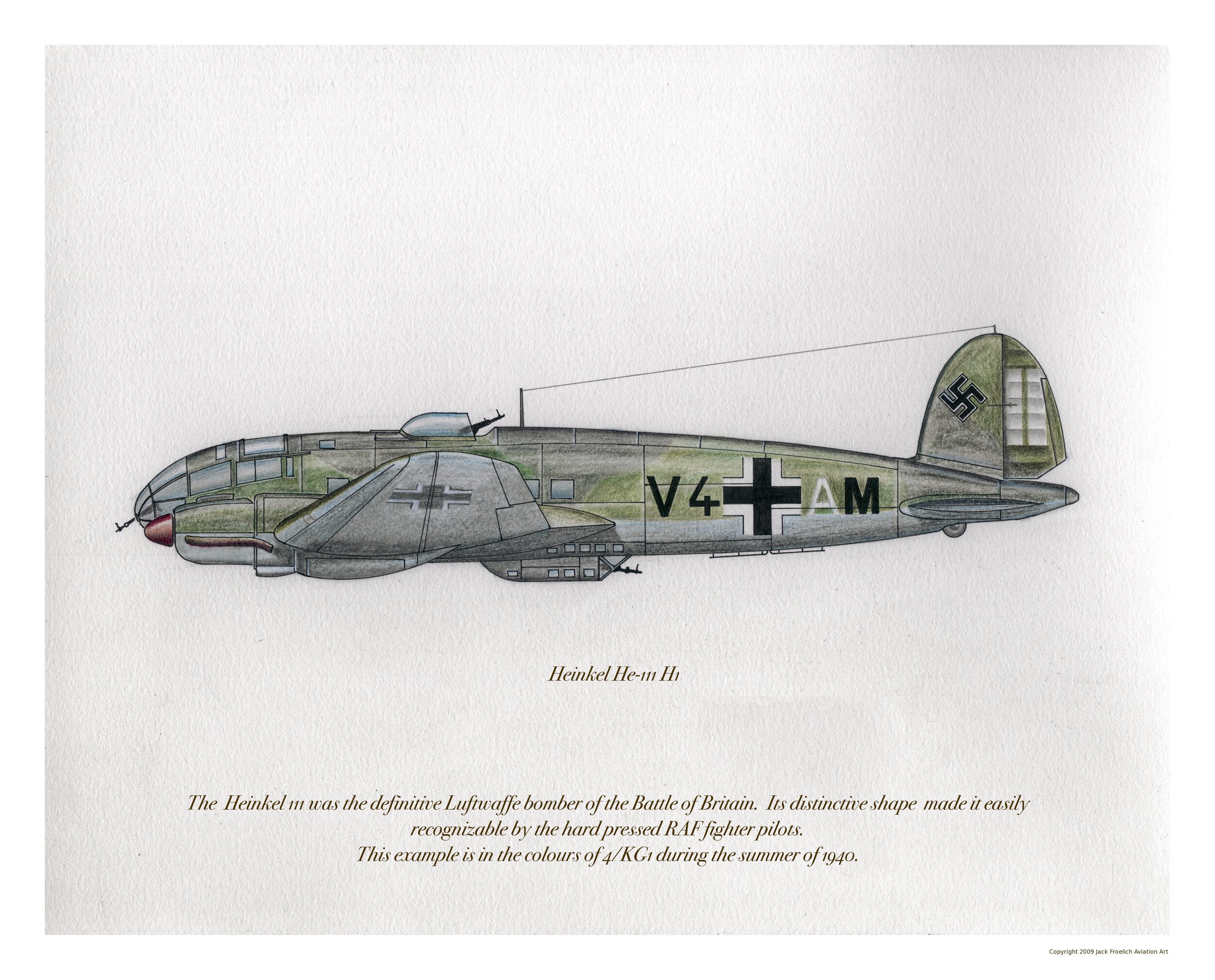
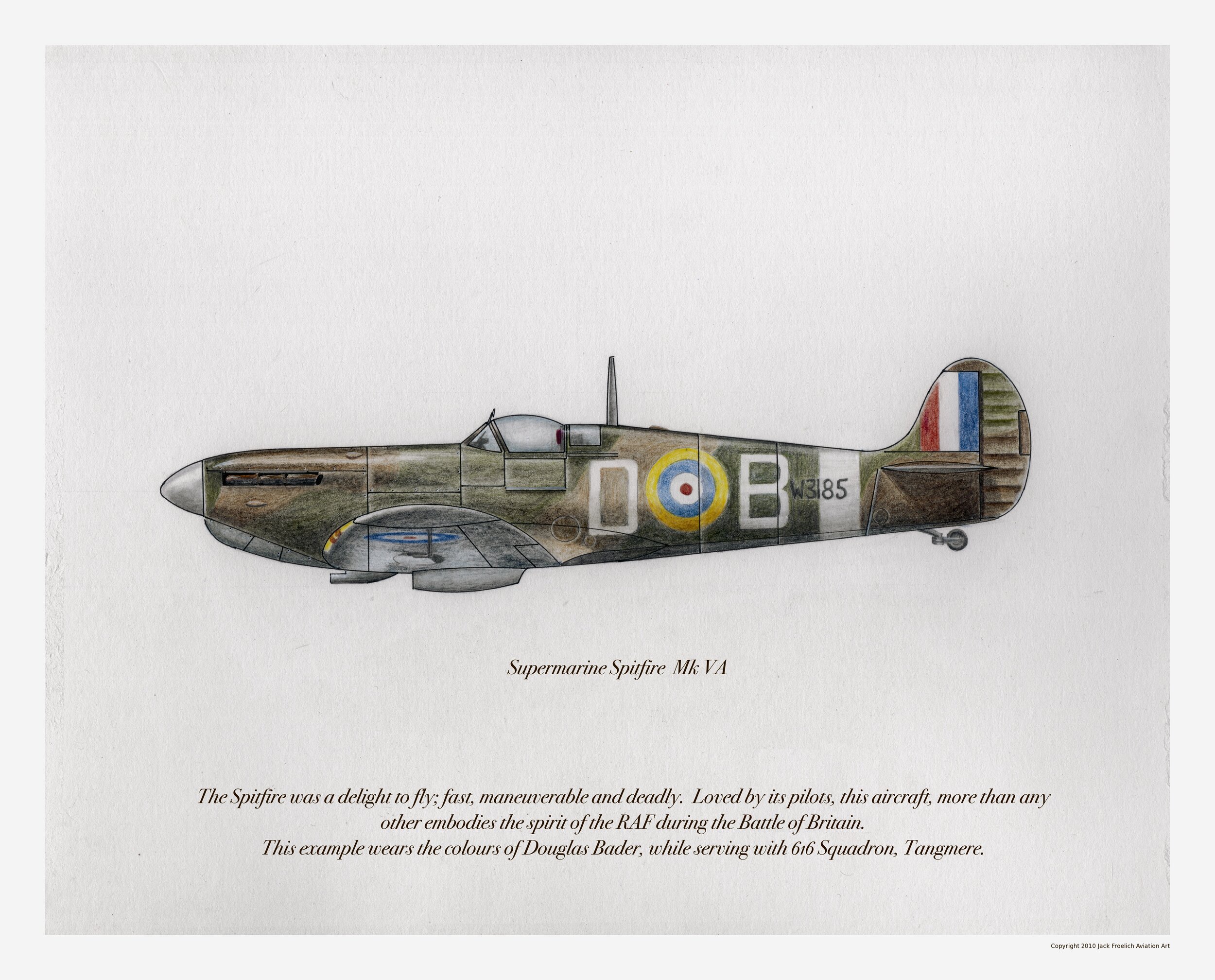

Drawn on site at the RAF Museum, Hendon, this P-40 is displayed with the iconic Shark’s mouth and desert camouflage it wore in the North African Campaign. Pencil and coloured pencil on A4 paper.

A Lockheed Hudson operated by the SOE picks up an agent and some cargo for transport to an isolated field in France during WWII. The Hudson could carry up to 10 agents rather than the 3 that could be carried in the Lysander. The Hudson also needed a larger field, and was not as extensively used as the Lizzie. Oil on Board. Original on display in the Tangmere Military Aviation Museum, West Sussex.

A friend of my flew Tempest Vs in Germany in April and May 1945. This sketch is a composition study for a future painting commemorating his service in this outstanding aircraft.

A coloured pencil compositional study for a future work commemorating the Tempest V operations of 222 Squadron in Germany in the final months of the war.

Concept and composition study for the painting of the same name elsewhere in this gallery.
THE NEED FOR SPEED
The following Gallery celebrates the Early jets and the initial efforts to break records and establish new boundaries in flight. These were the days when test pilots braved the unknown in a time before computer design and simulations.

The second prototype DH-108 Swallow, in the hands of John Derry, breaks the sound barrier on 9 September, 1948 to become the first British aircraft to exceed Mach 1. The type was plagued by problems and all three airframes were lost, with Geoffery DeHavilland being the first pilot to die, while testing the first prototype.
This painting is stylized to show the shockwave as the aircraft pushes through the transonic zone to achieve super-sonic flight.
Oil on board.

Chuck Yeager releases from the B-29 mother ship to become the first man to break the sound barrier.

25 September, 1953. Over the Libyan desert near Tripoli, Supermarine test pilot Mike Lithgow pushes the Swift F.4 prototype WK 198 to 735.7 MPH to set a new world speed record.
Oil on Canvas, 30" x 40". Original in Tangmere Military Aircraft History Museum, West Sussex, UK
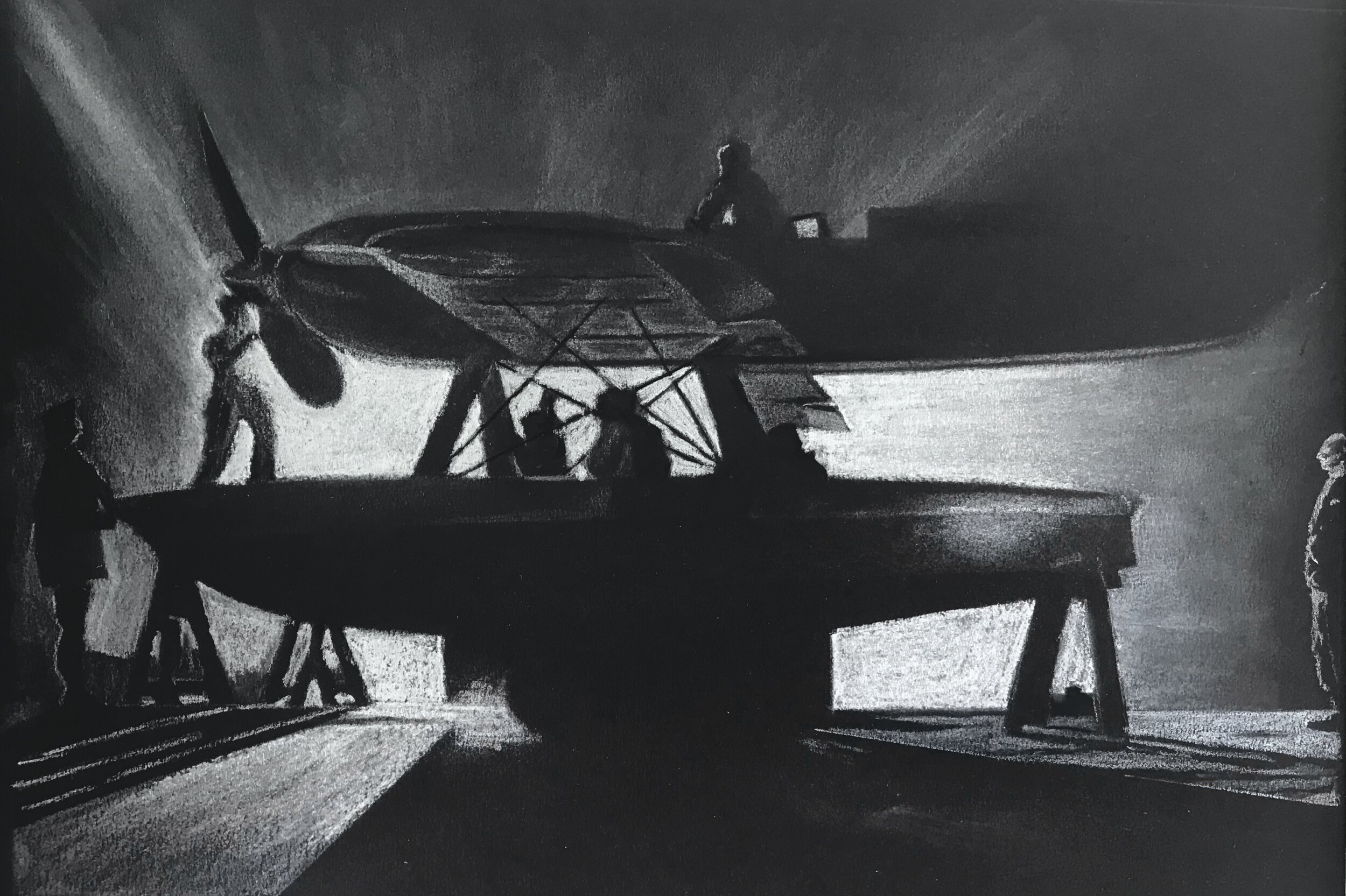
R.J. Mitchell, designer of the Supermarine S6 Schneider trophy winner of 1929 watches from the sidelines as the aircraft is prepared for what would be the race that retired the Trophy to Britain for all time. White Charcoal on black paper, A4 size.
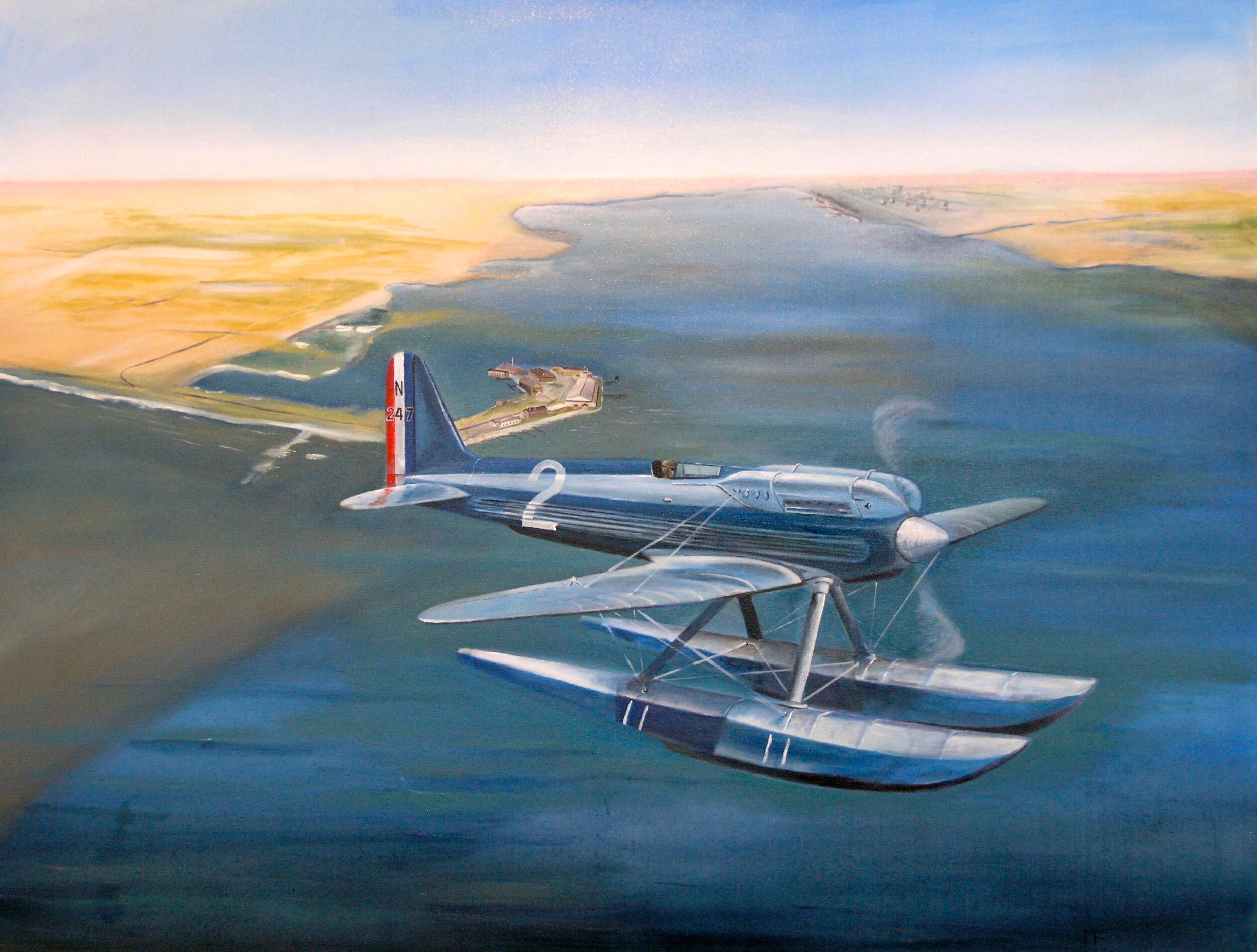
The Supermarine S6 racer retired the Schneider Trophy for Britain in 1929. Designed by the legendary R.J. Mitchell, whose subsequent aircraft, the Spitfire, the Racers were crucial in the development of the subsequent fighter aircraft.
USAF C-7A Caribou operations - Republic of Vietnam, 1968 - 1969
This Gallery is a personal recollection of my tour as a pilot with the 457th Tactical Airlift Squadron during the Vietnam War.

The Artist's first day in country. This is the Caribou ramp at Cam Ranh, with aircraft of the 457th and 458th Squadrons being readied for the day's flying.
Pencil
Prints available through the C-7A Caribou Association: http://www.c-7acaribou.com

This picture is based on an incident that took place during the siege of Duc Lap, a Special Forces camp in the central highlands of Vietnam, near the Cambodian border. While the camp was under attack, we were tasked with the evacuation of GIs and ARVN forces. Heavily overloaded, we staggered into the air and were barely able to keep above the trees. As we rounded a hill, we were faced with a CH-54 Skycrane carrying a truck on a sling. We were both slow and had no ability to maneuver, but with takeoff flaps selected, I managed to get the Caribou into a left turn, passing in front of the helicopter and missing by about 100 yards. Sighs of relief all around.
Pencil
Prints available through the C-7A Caribou Association: http://www.c-7acaribou.com

Not "Instrument Flight Rules", but "I Follow Roads". Most of our destinations were not equipped with landing aids for bad weather so we often had to stay under the clouds to find the field. During the monsoon season this could result in some pretty low flying.
Pencil
Prints available through the C-7A Caribou Association: http://www.c-7acaribou.com

A Caribou lands at the Special Forces camp of Dak Pek in the Central Highlands of Vietnam. Our mission here was resupply of the Montagnard and American forces who manned this mountain outpost. A difficult approach and landing amid the hills required a special qualification on the part of the pilots.
Pencil
Prints available through the C-7A Caribou Association: http://www.c-7acaribou.com
AIRLINES AND AIRLINERS
Most of my career in the air was spent with the airlines. Here I present various aspects of that type of flying. After leaving the USAF in 1973, I joined Saudi Arabian Airlines and spent the next 15 years of my life in Jeddah, on the Red Sea coast. I flew a variety of aircraft, but never, unfortunately, the venerable DC-3, shown here taking off from a desert strip somewhere on the Arabian Peninsula. Saudia operated the old Gooney Bird well into the 70’s, using it to service Bedouin encampments in areas far from established airfields.

Saudi Arabian Airlines began in 1942 with a DC-3 donated to the Kingdom by Franklin D. Roosevelt, president of the USA. Saudia operated the venerable Gooney Bird well into the 1970s, serving Bedouin encampments in the deserts of the Arabian Peninsula. Oil on Canvas

The Northern lights provide the backdrop for a 747 as it wings its way from JFK to Anchorage Alaska. I spent many nights on this route, with the Aurora dead ahead and awesome for hours on end.



Foreign Climes
I’ve spent most of my life on the road. Here are some works that reflect the places I’ve been and which have had an impact on my life.

Done in oils with palette knife, this camel braves a typical windy day in the Saudi desert. Taken from a photo I took while out and about one day during the 1970s. Oil on Canvas.
Original in private collection
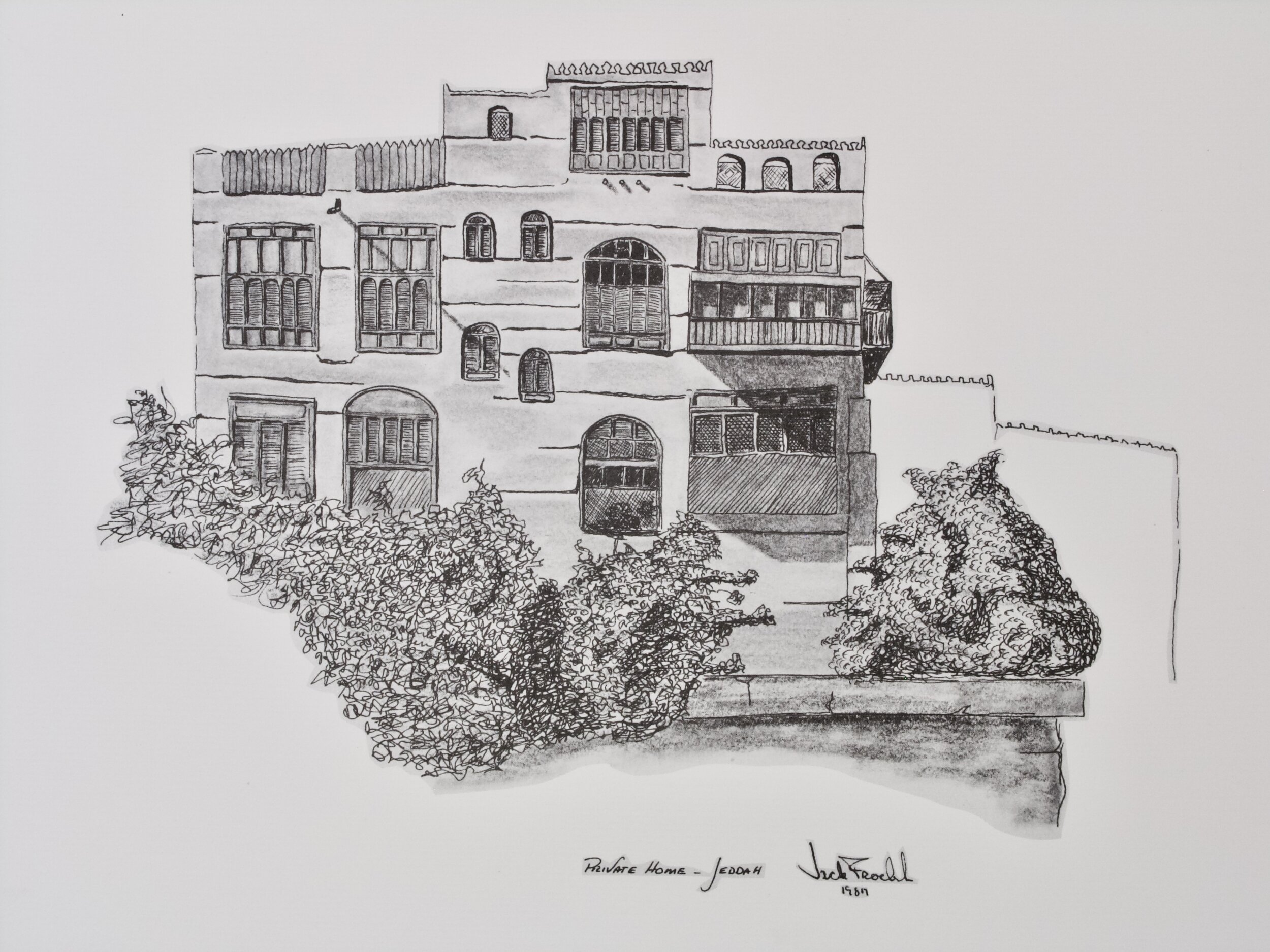
This house typifies the architecture and style of older homes and buildings in Saudi Arabia. This house was not far from the compound where I lived from 1976 - 1991. Pen and Pencil, A3 size.
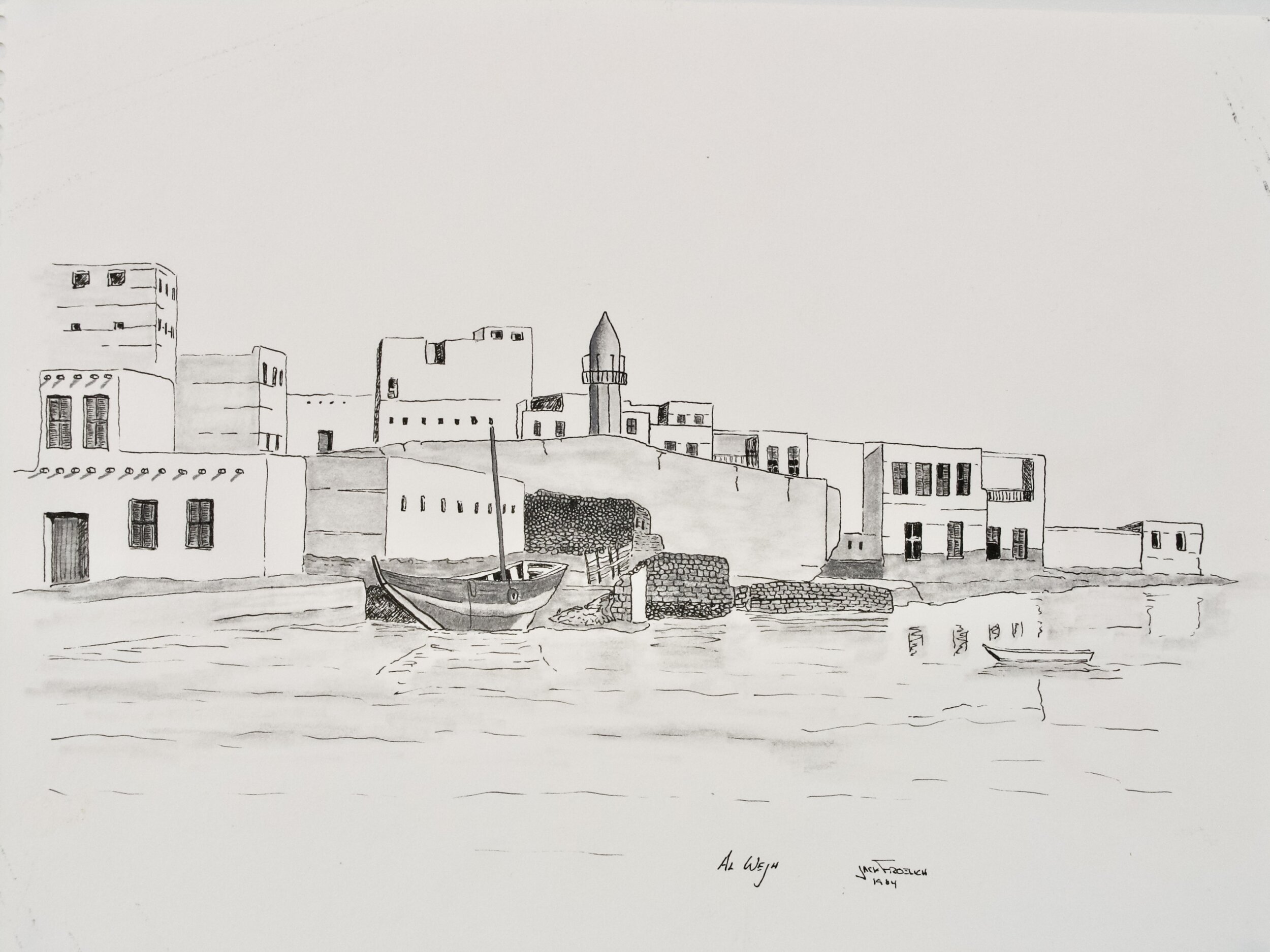
I visited Al Wedjh on many occasions while serving as a B-737 training captain. We used the airport for training and often went down to the town and harbour at lunchtime to get some fresh fish.
Pencil on Cartridge paper, A3 size

Typical street scene in Jeddah, Saudi Arabia in the twenties. Pen and pencil on A3 Paper. (The mosque in the centre of the picture was still there when I lived in Jeddah in the 70s and 80s)

This drawing harks back to the early days of the 20th Century, before glass and steel became the default architecture throughout the world. I love the old streets of Jeddah, Cairo and many other cities in the Middle East. Pen and Ink on A4 Bristol board.
Birds and Beasts
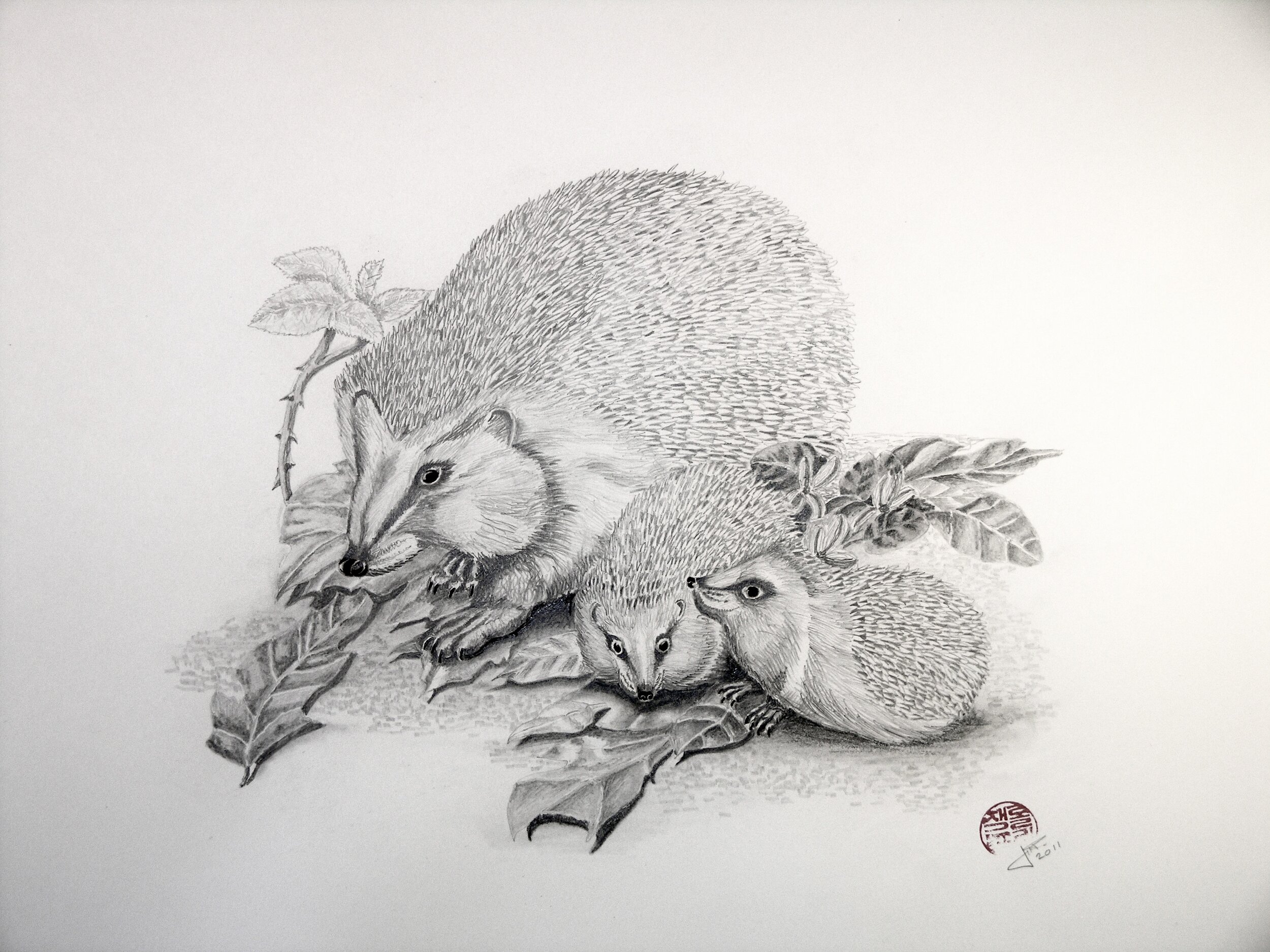
Once very common throughout the UK, these little critters are becoming the victim of habitat loss, pesticides which kill off their insect prey and their distressing habit of becoming roadkill. Pen and Pencil on A4 paper.
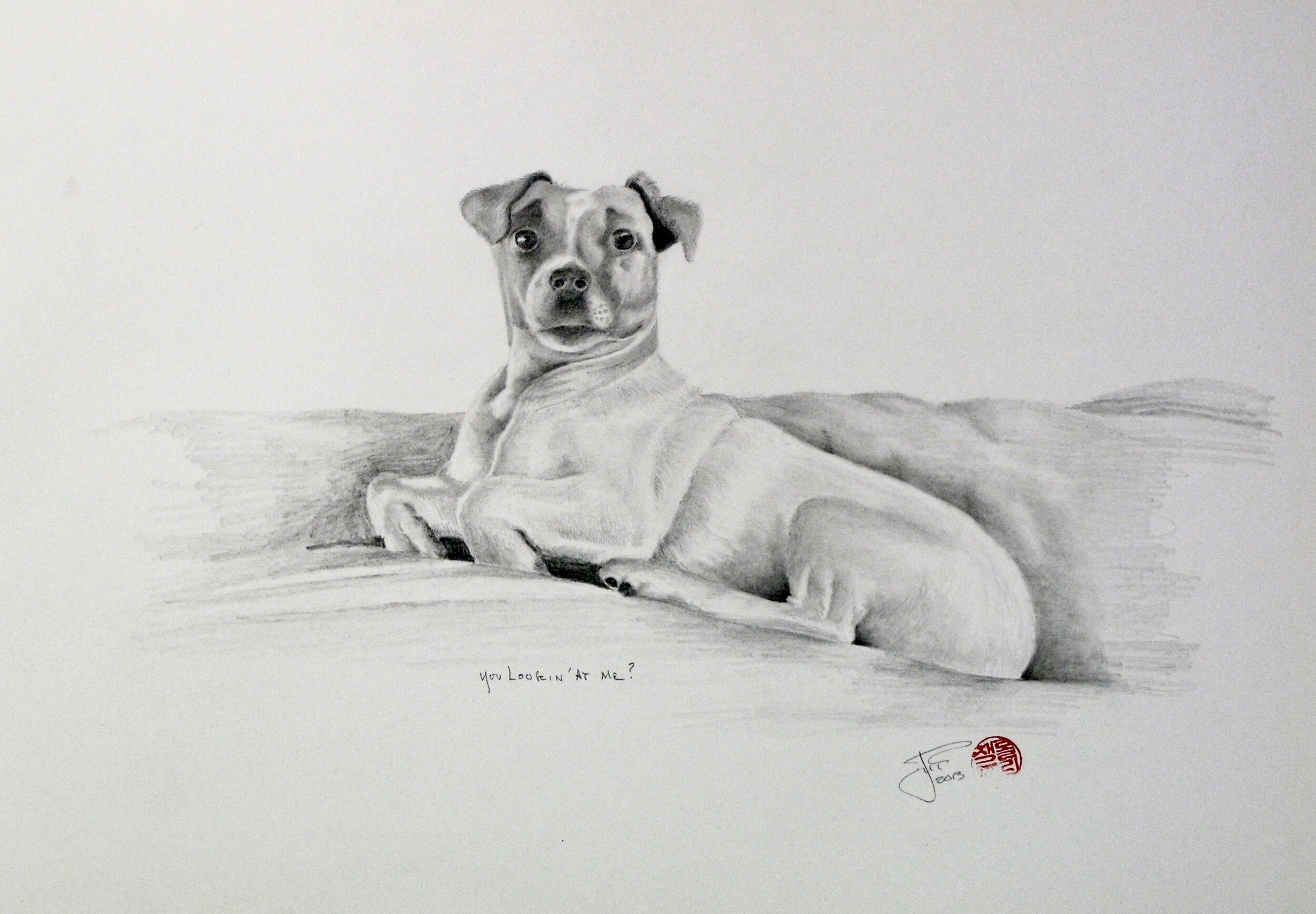
The Jack Russell is a favourite pet pretty much everywhere. This is a portrait of my sister’s late and much missed doggo, Jack.
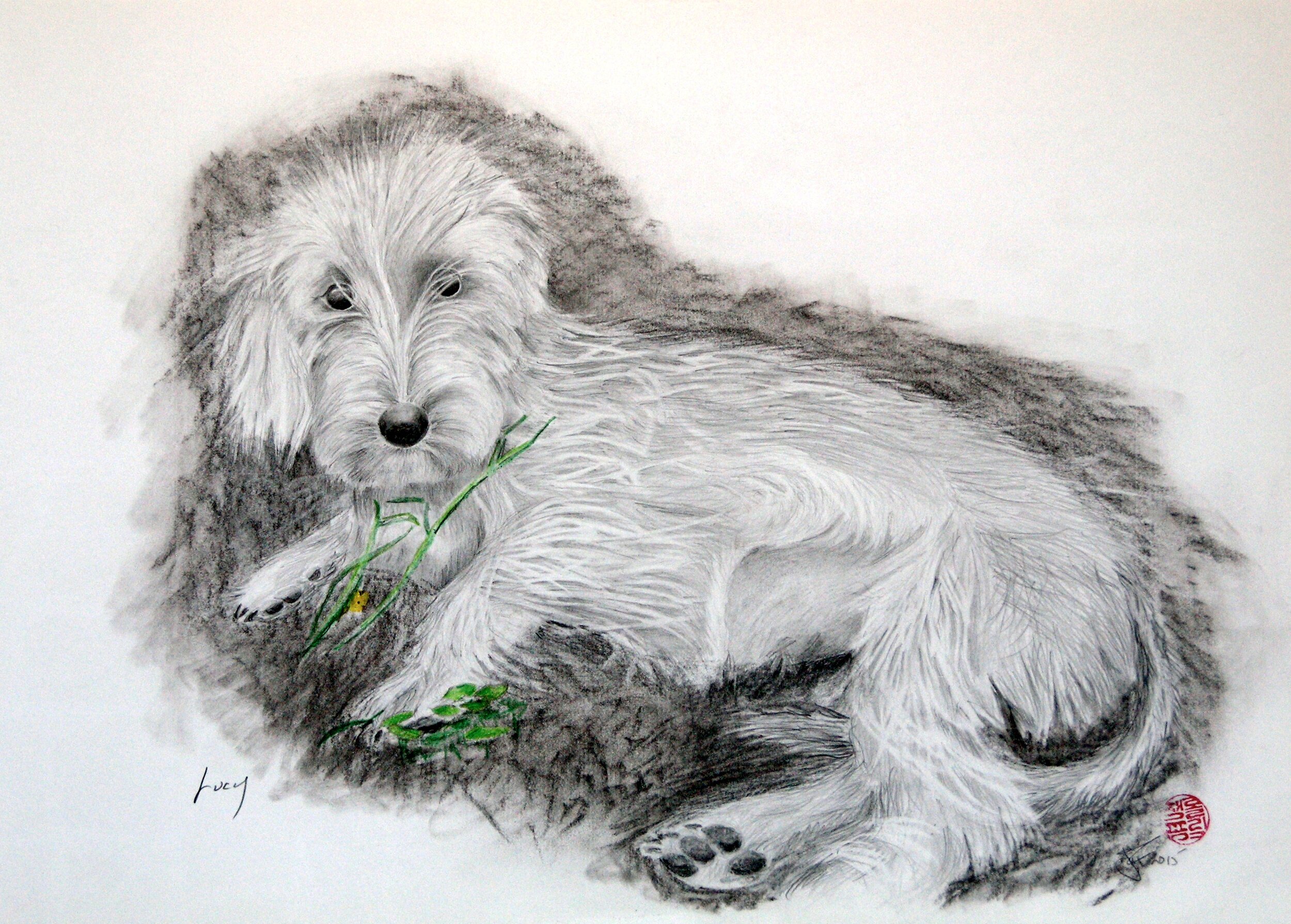
Can’t exactly say what breed Lucy is, but she’s a bundle of joy.
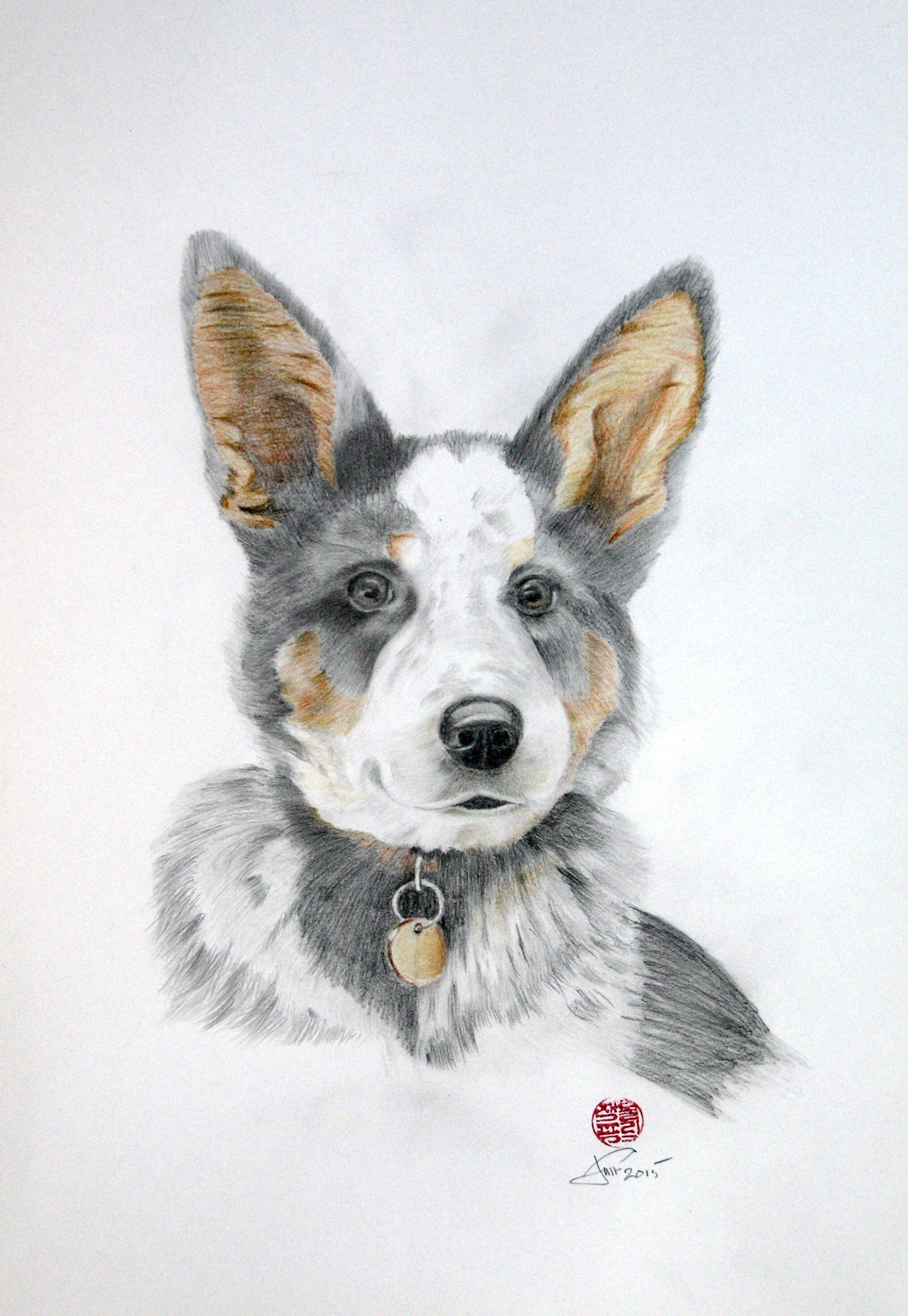
This drawing was done as a gift for a colleague. Pencil and coloured pencil on Bristol board, A4. Original in private collection.
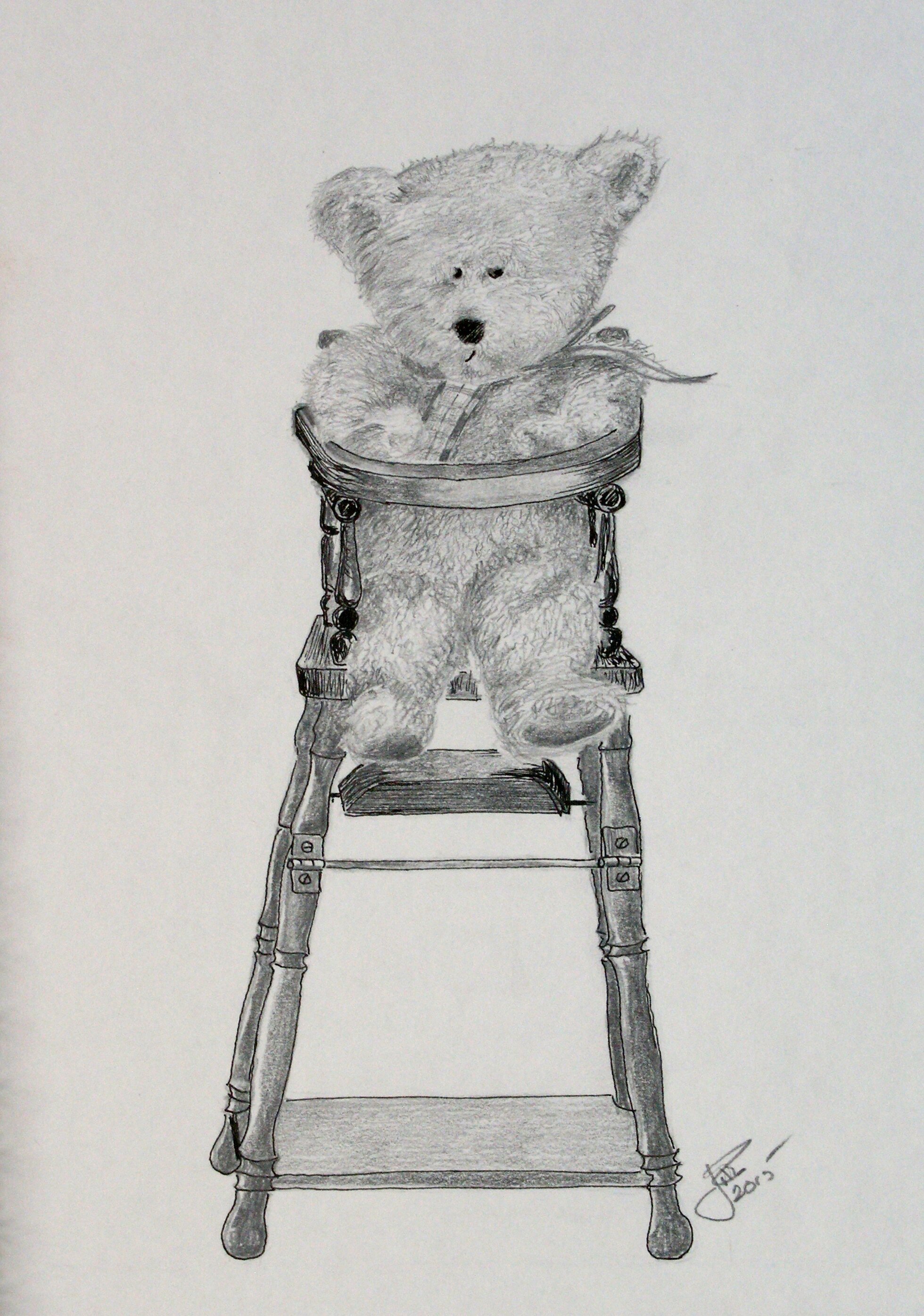
Not all the critters I draw are pets, although perhaps the owner of this little chap would disagree. Pencil on A4 paper
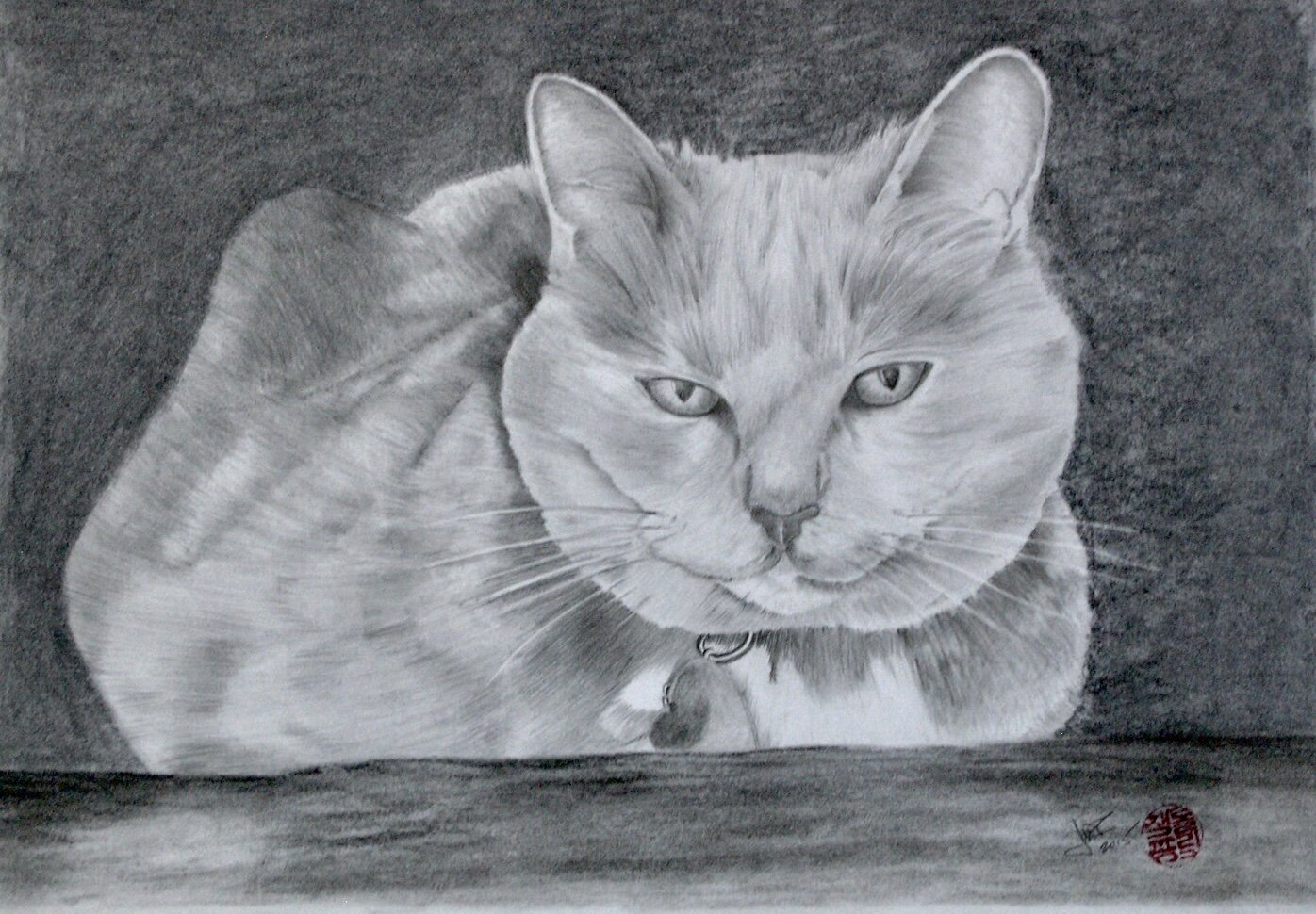
A relative’s late, beloved moggy. Pencil and Charcoal on A4 paper. Original in private collection.
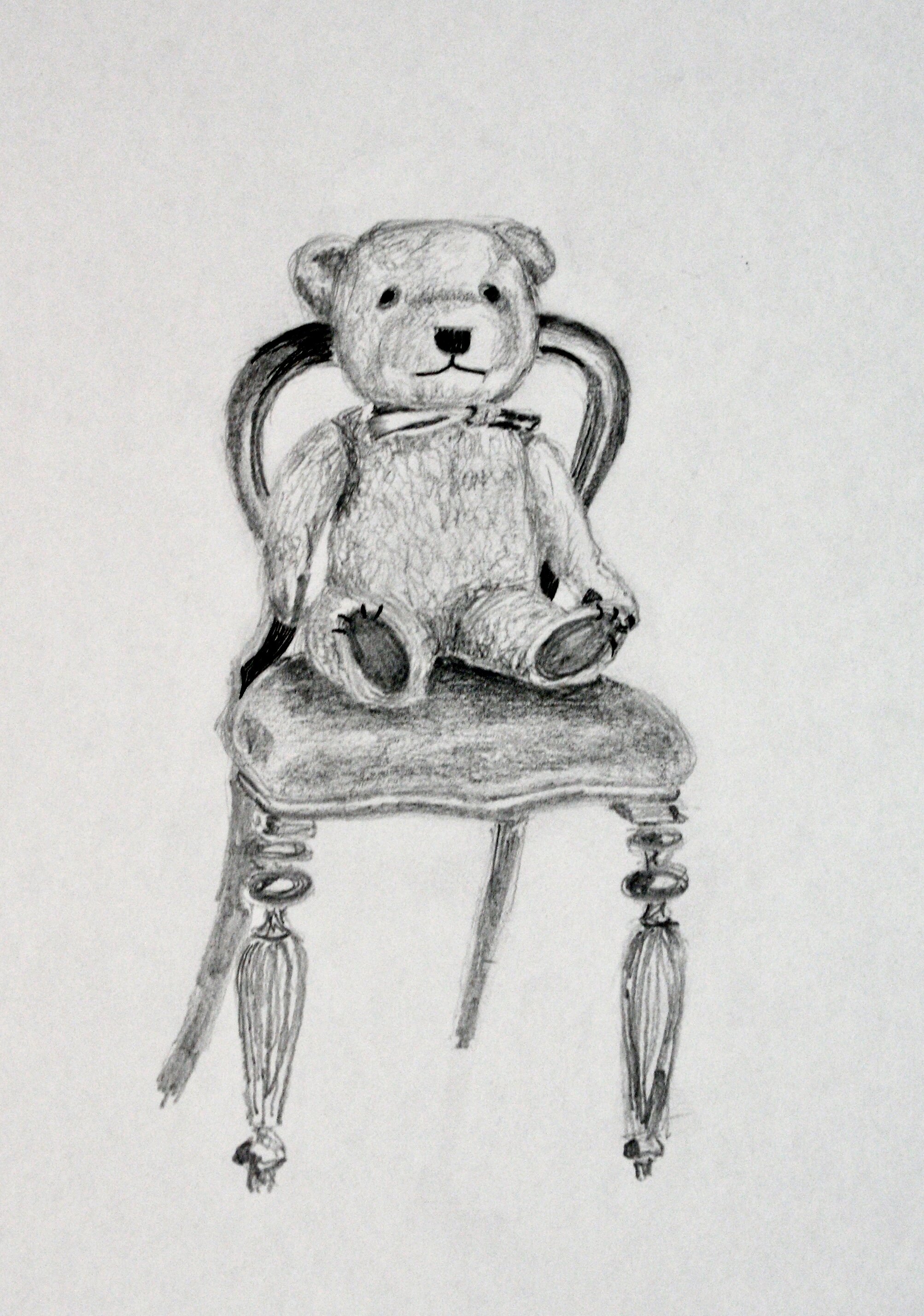
Another much loved Teddy. Pencil on A4.

This bear gets tucked up with my wife all winter, as he has a nice warm hot water bottle in his tummy. Pencil on A4 paper.
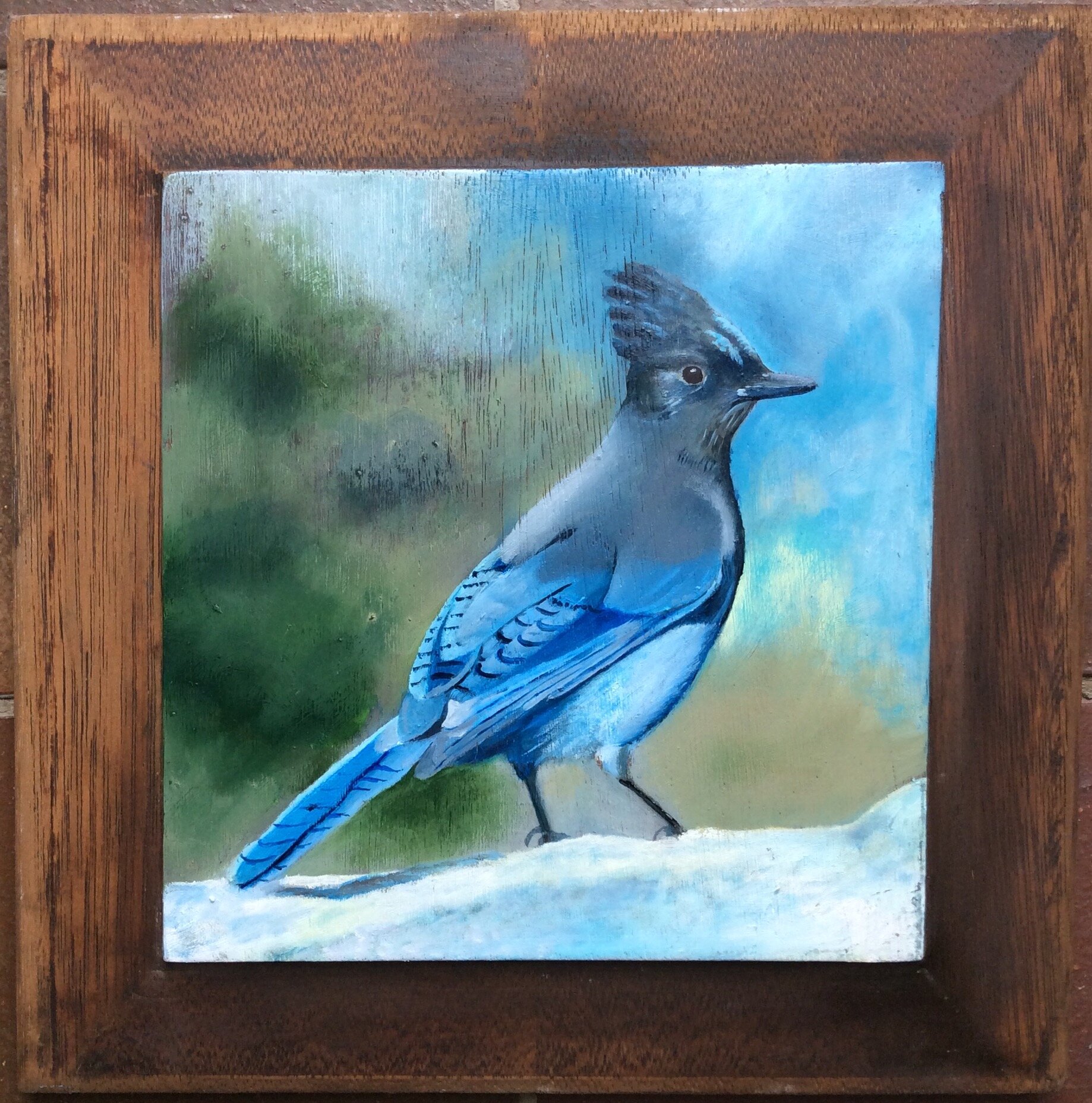
I photographed this fellow back in 1969 while camping in Yosemite park, California. Always a good subject. Oil on wood panel. 19 x 19cm (painting only. 26 x 26cm overall) Original for sale, unframed; £45.00
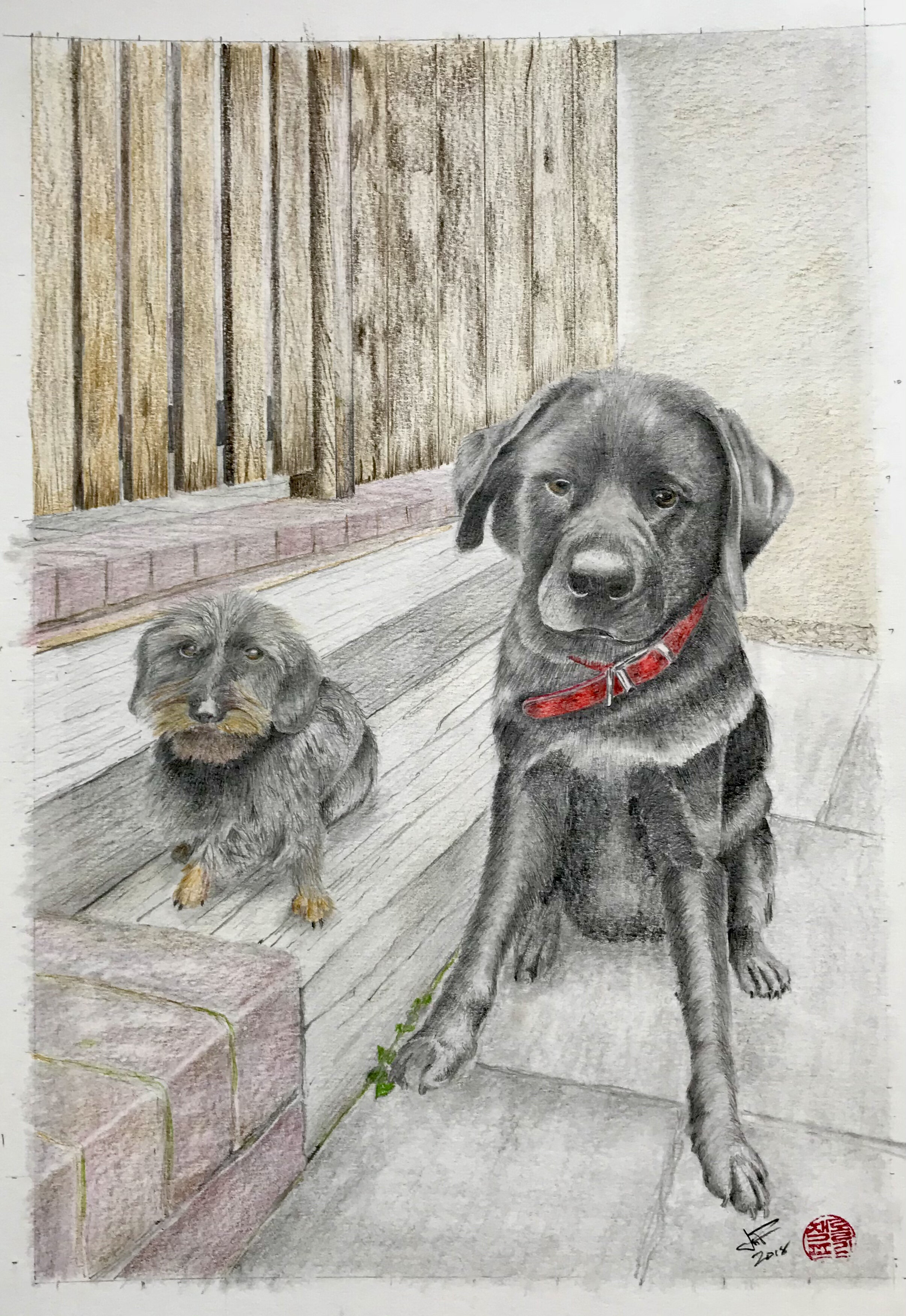
Done as a gift for a relative. Pencil and coloured pencil on A3 Paper.
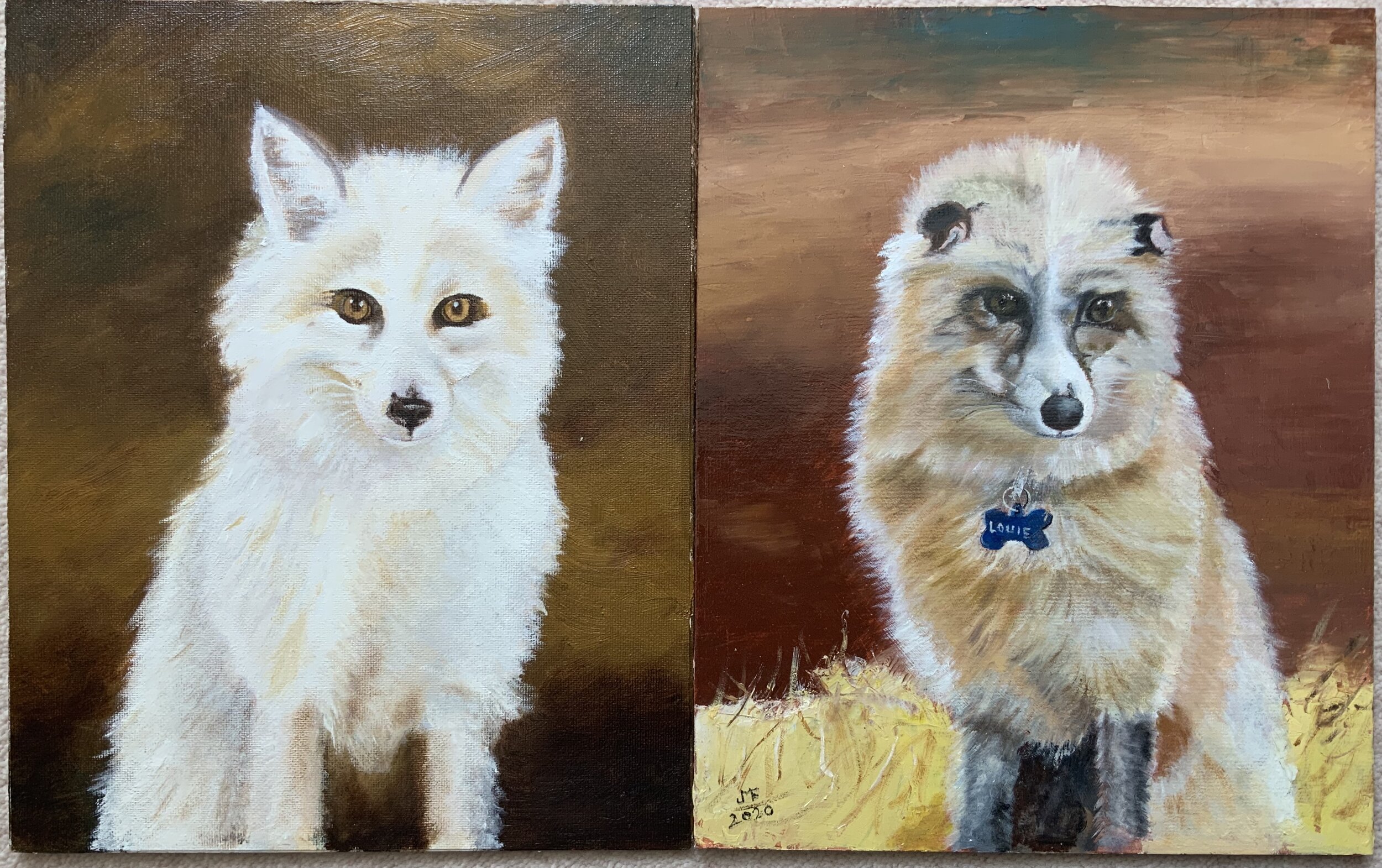
Actually two separate 8’ x 10’ paintings of rescued foxes. My niece runs a charity in Key Largo, Florida to rescue foxes from fur farms. (Pawsitive Beginnings) These two would have been killed as Libby has no tail and Louie’s ears are stunted. They are now living out their lives in style.

Certainly one of the most common birds in the UK, we have several pairs who visit us on a regular basis. This fellow followed me around while I was cutting the grass and made a neat pile of the grass clippings, when he then took bit by bit off to where they were building their nest. Oil on board, 8” x 10”. Original for sale, unframed: £40.00

There is a rather large flock of these colourful waterfowl at our local lake. They are joined by a resident flock of Canada geese and assorted swans, moorhens and coots. Quite a good place for birdwatching, if that’s your thing. Oil on panel, A5 size. Original for sale, unframed: £35.00
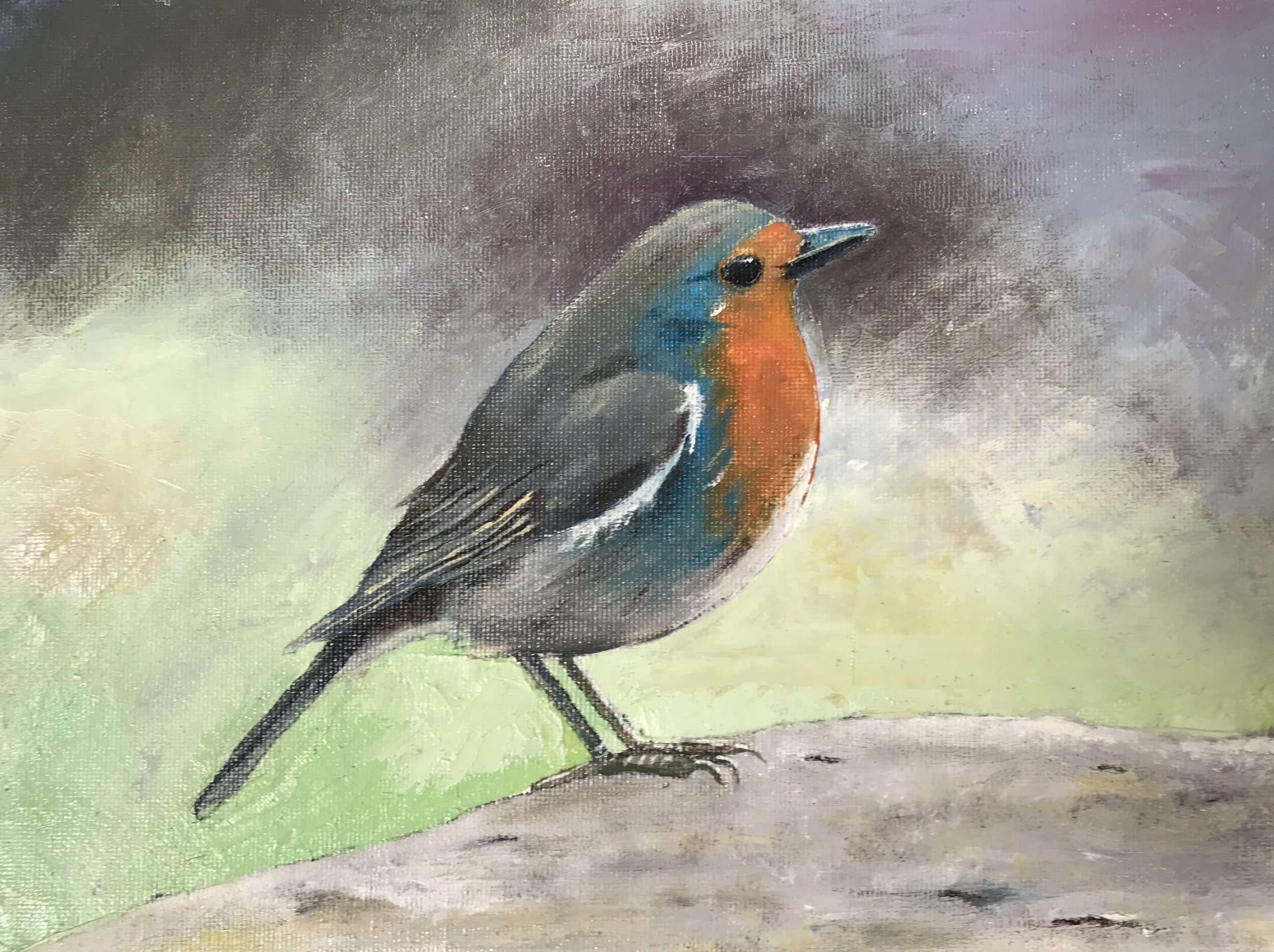
There are a good many of these little chaps around our back garden. One of them tends to hop along behind me when I’m weeding, feasting on the upturned grubs and worms. Oil on Canvas Board 7” x 9”. Original for sale, unframed; £40.00

Quite common around our area of Hampshire. They always add a touch of colour to the back yard. Oil on board, 7” x 9”. Original for sale, unframed: £35.00

We have a large and fruitful apple tree in the back garden, which attracts a large number of these little chaps when in bloom. Oil on board, 8” x 10”. Original for sale; £45.00

A collections of pets and other creatures that have caught my fancy or been commissioned.
Miscellaneous Subjects
Bits and bobs, things that have taken my fancy over the years.
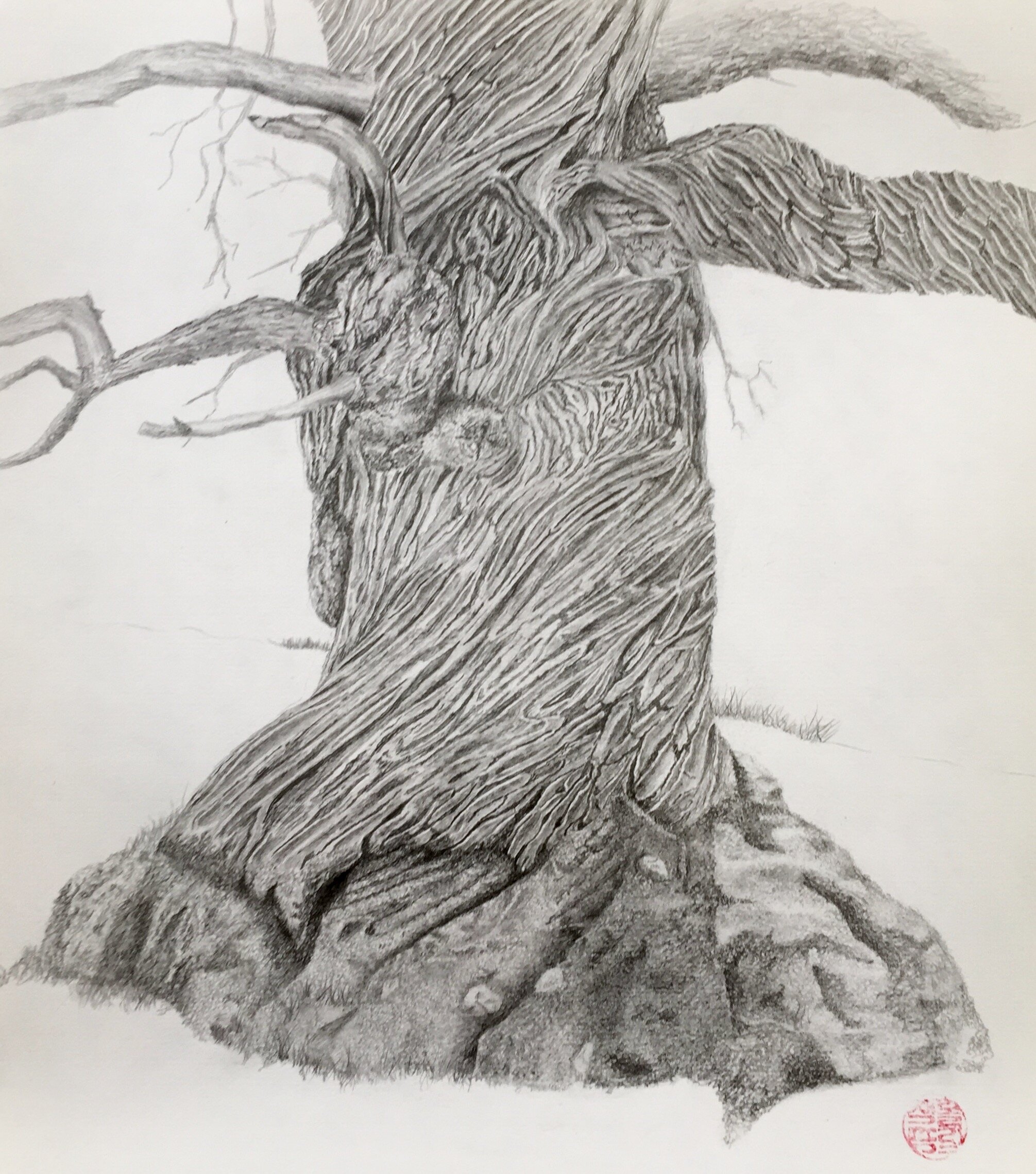
An ancient tree I ran across while strolling the grounds of Petworth Park, a National Trust property in West Sussex. Pencil on A4 paper.
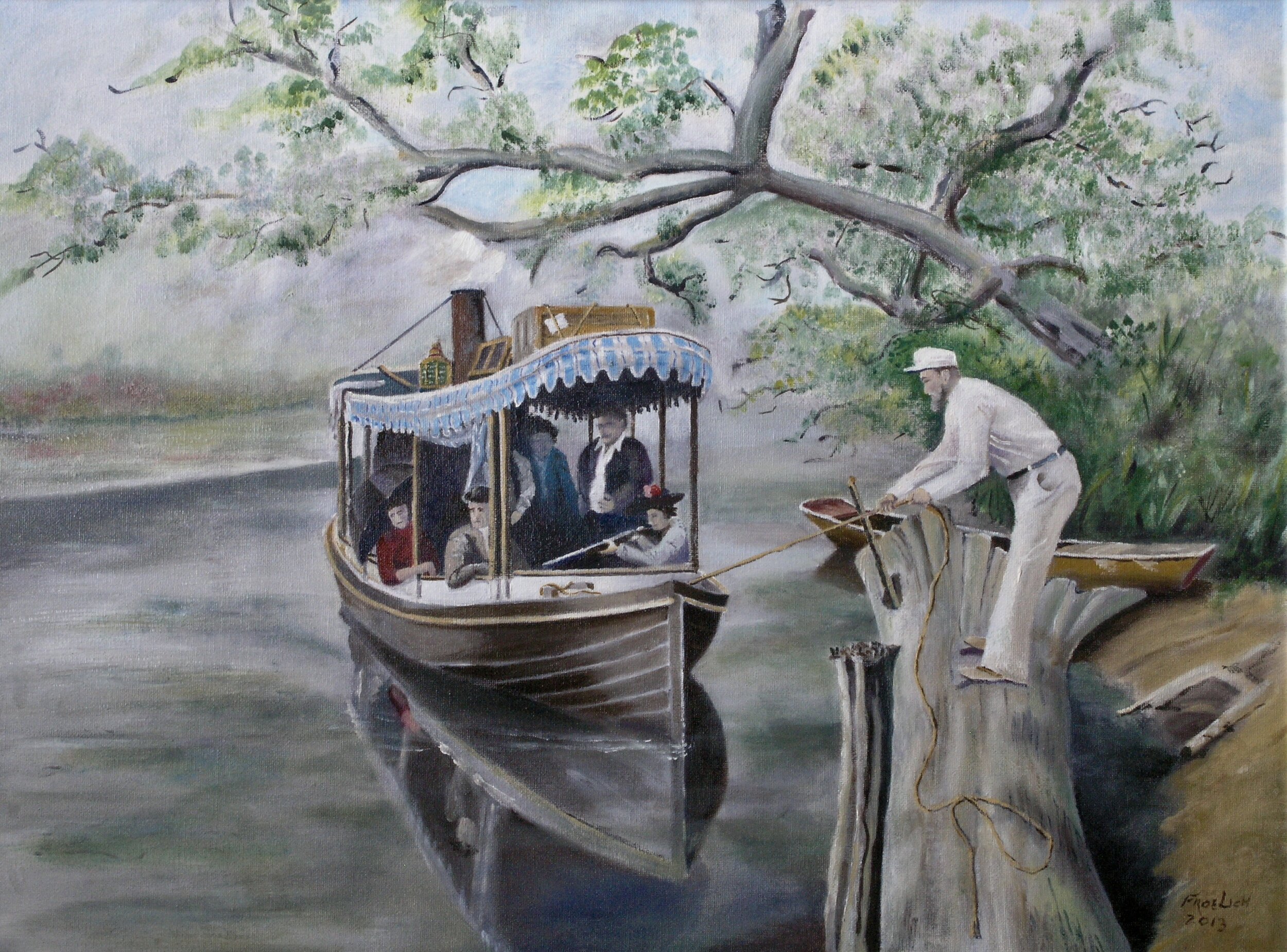
A party of tourists enjoys a spot of alligator hunting from a steam launch. One of the ladies in the bow takes aim for a pot shot. Different times, different amusements.

21 May,1982
May 21 was a busy day of war.
The British landings in San Carlos Water provoked a strong reaction by the Argentine air force, and during fierce aerial combat an estimated nine enemy aircraft were shot down. In mid-afternoon Lt. Cdr. R.V. “Fred” Frederiksen, serving with 800 Squadron RNAS on HMS Hermes, was leading a flight of two Sea Harriers with sub-lieutenant Andy George as his wingman. At low level and under a layer of cloud the pair spotted a flight of four Dagger ground attack aircraft approaching the Task Force. Closing behind the last of these, Frederiksen launched an AIM-9L Sidewinder air-to-air missile to bring down Lieutenant Hector Luna's jet. He then sprayed the leader of the enemy formation with cannon fire. Luna ejected at low level and was lucky to land on the side of a mountain, from where he was rescued. Oil on canvas. Original in private collection.

A great day out at the Tiger Club when it was based at Redhill. Loved flying the old girl. On the day pictured, I took Alan up in the Tiger and, I think, the Super cub. Oil on Canvas. Original in Private collection.
